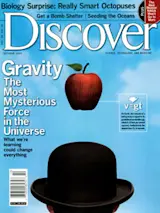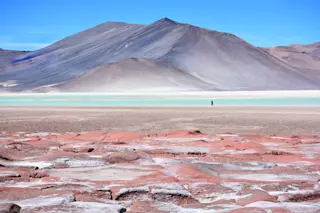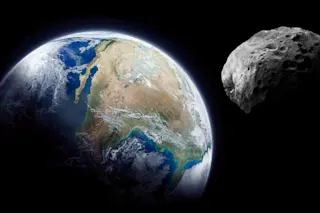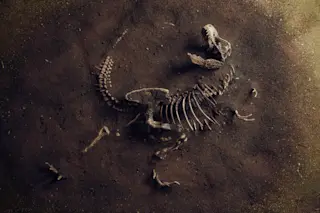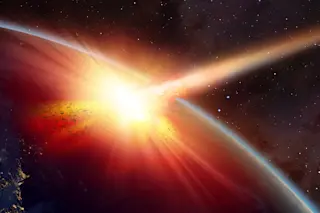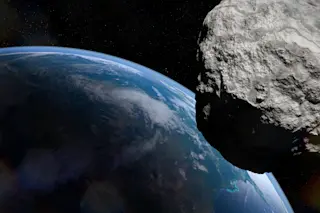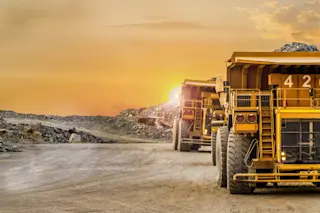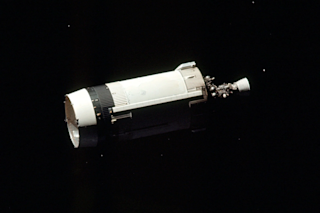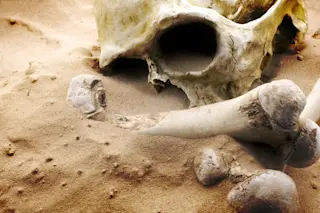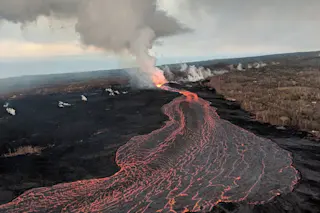Have some prominent scientists inadvertently been playing Chicken Little? Working from computer models, several researchers warned that asteroid impacts could trigger devastating tsunamis with frightening frequency, at least once every 4,000 years. Never fear: Philip Bland, a planetary scientist at Imperial College London, says his improved calculations show that the actual rate is probably much lower.
The Wolf Creek Crater in Western Australia testifies to the destructive power of asteroids on land.Photograph courtesy of Philip Bland
The previous simulations portrayed incoming asteroids as continuous blobs—picture a ball of glue flattening and spreading as it hits a hard surface. Bland developed a more realistic model that allows asteroids to disintegrate on the way in. "We're looking at the forces acting on stone or iron fragments as an object breaks up upon entering the atmosphere," he says. Fragmentation greatly reduces the odds of a major tsunami. To generate a 16-foot-high tidal wave, ...


